Sports & Remedial Massage Treatment in Chigwell, Woodford, Hornchurch & Bow
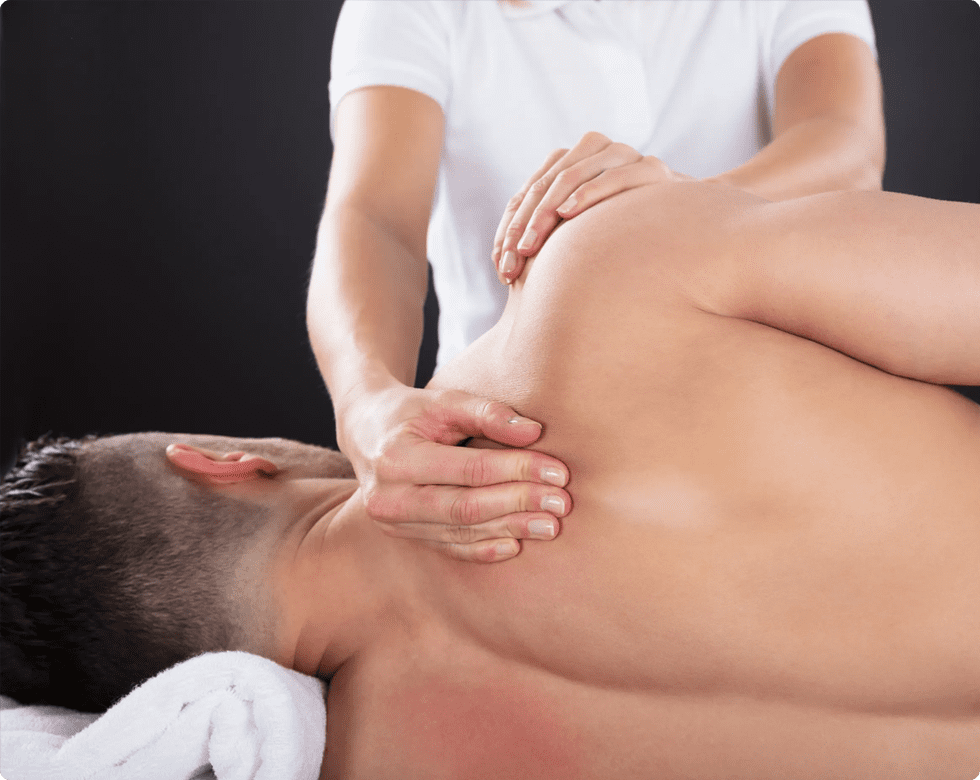
About Massage Therapy
Massage therapy involves hands-on pressure, kneading, and stretching to relieve tension, knots, shortening and scar tissue in muscles and other soft tissues. There is a vast array of different styles and techniques of such soft tissue release, from those that use lots of oil such as “effleurage” and “Swedish massage” to those that use very little or no oil, for example, “clinical trigger point massage” or “cross fibre soft tissue”.
Long, superficial sweeping strokes tend to improve circulation and drainage, whilst more advanced techniques arguably have a more long-lasting therapeutic affect. For example, the acupressure style (often referred to as “inhibition”, “neuro-muscular technique” or “ischaemic compression”) promotes the release of muscle knots (trigger points). Other types of advanced clinical massage involve very short rubbing or frictional movements (friction massage or “frictions”) to break down fibrotic scar tissue and improve collagen formation within the connective tissues. Pressures, applications and effects can vary vastly depending on the practitioners’ use of precise techniques involved.
Massage Therapy at Spine Plus?
Our therapists can gear their treatments towards whatever outcome you desire or require. If you are seeking a soothing, relaxing massage to mentally unwind, you need look no further, your treatment will mainly consist of Swedish style, long relaxing and sweeping strokes. On the other hand, if you are seeking a more therapeutic treatment, to iron out knots and trigger points, to manage a chronic myofascial pain condition, or to improve mobility as part of pre and post-sporting preparation – then the treatment will consist of the more advance massage therapy techniques outlined about. This type of advanced, clinical massage therapy is what we specialise in at Spine Plus, it requires a precise knowledge of human anatomy and will likely differ considerably from the style of massage available at beauty salons.
How does advanced massage therapy work?
As mentioned above long sweeping strokes generally improve blood flow to and from the muscles and other soft tissues, improve lymphatic drainage and removal of waste products (such as lactic acid). Ischaemic compression is thought to work on a couple of different levels, the initial temporary increase in pain is followed by modulation in pain perception within the nervous system resulting in reduced localised and referred pain. Also, by temporarily restricting the blood flow to the muscle knot (trigger point) to which the pressure is being applied, this will induce a rush of blood to the area once the pressure is released, helping to flush out waste products from deep within the muscle and also restore delivery of oxygen-carrying blood to the parts of the muscle that need it most. Cross-fibre soft tissue massage is similar to ischaemic compression except that a small amplitude stretch is applied at 90 degrees to the direction of the muscle fibres; this in effect applies a localised stretch to that part of the muscle that is most taut and shortened and also helps to release adhesions that can occur between the fibres as a result of injury of inflammation. Massage tools may be used with this technique to further enhance contact pressures and engagement with specific muscle fibres (this may referred to as “instrument-assisted massage” or “instrument-assisted soft tissue release”). Similarly, certain types of massage tools may be used to improve restrictions within the fascia or membranes encasing and connecting muscles (e.g. Graston Technique), or used during friction massage. Friction massage tends to be used at sites of scar tissue (fibrosis) from old injuries, such as previously healed muscle tears, where the collagen fibres tend to have formed in a disorientated direction rather than in parallel lines as would be the case with healthy tissue, friction is applied to break down deformed collagen (scar tissue) at and to stimulate healing and improved collagen deposition and orientation.
Osteopathy clinics in London
How often?
Massage is usually performed once a week, twice at most. A typical course of sessions for a particular pain condition or injury would typically take 3 to 6 weeks, with optional follow-up single-session massages performed every 4 to 6 weeks to maintain progress; or a general “feel good” massage can be performed once or twice a week for as many weeks as required. Typical sports massage may be performed following strenuous bouts of exercises up to a couple of times per week, to aid recovery and reduce injury risk.
What does advanced massage therapy feel like?
Advanced massage techniques use firm pressure at the point of injury, dysfunction or pain. This may highlight and temporarily accentuate symptoms during the first few seconds, the discomfort should not exceed 7 out 10 on a pain scale (if it’s more than 7 you should ask the therapist to ease off the pressure). However, this should feel like “good pain”, as the therapist identifies and makes contact with the source of pain before you experience the tissues slowly letting go and releasing, leaving you with a sense of ease and improved mobility by the end of the session. 12 to 48 hours following the treatment, particularly if you are not used to receiving deep massage, it is not uncommon to experience some post-treatment soreness that may not have been present before the session, this is due to temporary (acute) inflammation which is part of the healing process. If the reaction does occur if may last for a few days but then will usually be followed and replaced by a greater sense of ease than you had before the treatment.
Is Massage Therapy safe?
Massage therapy in one form or another has been around for centuries and one could argue is one of the most tried and tested therapeutic interventions. Massage therapy is non-invasive and does not involve any medication. As a means of pain management, it does not therefore pose the potential serious risks associated with surgery and some medications such as painkillers, anti-inflammatories, and muscle relaxants. With that said massage therapy should not be used over areas of varicose veins or deep vein thrombosis (as this might produce embolism), undiagnosed lumps or bumps, bruising, cuts, abrasions, sunburn, skin disease, or when someone is unwell (including cold of flu).
Why choose us for your massage therapy?
Training & expertise of our therapists:
All our massage therapists have qualified from respected institutions such as The London School of Sports Massage. Furthermore, all our massage therapists have had to pass our own rigorous in-house recruitment process, plus we invest lots of time in continually training our massage therapists so that they are at the top of their game.Technique:
We use a range of massage techniques depending on your needs and wishes ranging from gentle stroking and kneading using oil/cream to promote blood flow, to more advanced, deeper, clinical massage techniques such as “cross fibre” and trigger point release that uses little or no oil and require precise knowledge of human anatomy and physiology.Teamwork:
At Spine Plus we really value the therapeutic power of deep myofascial release massage techniques. Our massage therapists work as part of a clinical team which includes physiotherapists and osteopaths (who also use plenty of deep massage during their treatments) and who are on hand to assist our massage therapists when necessary.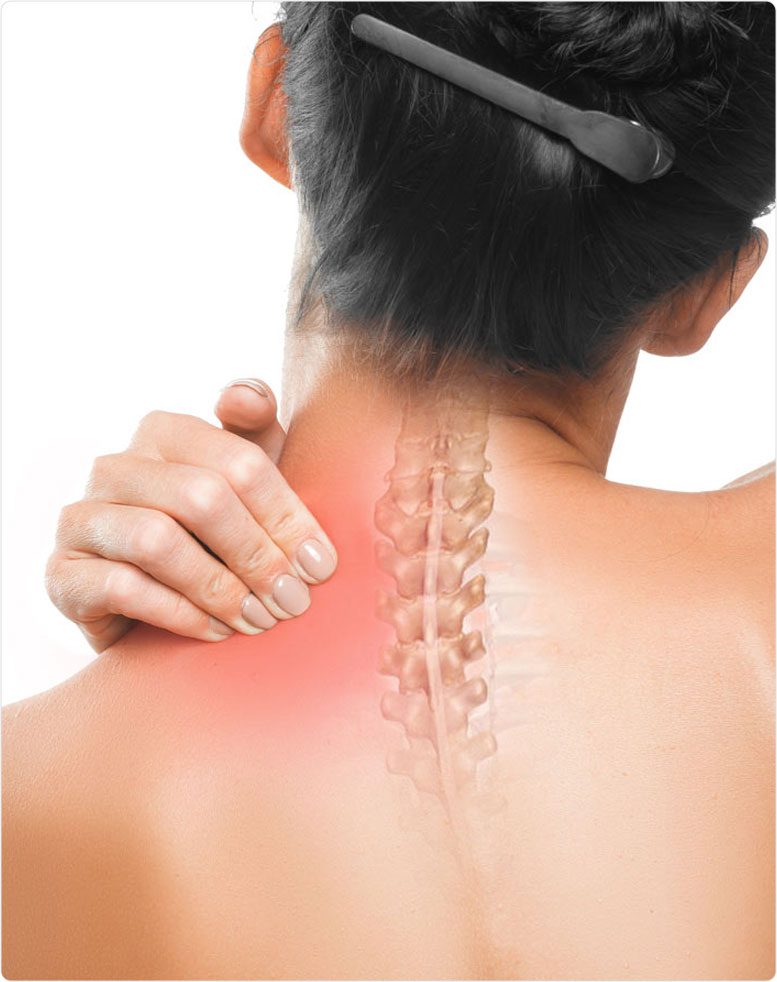
• 100’s of 5 star Google and Facebook reviews
• Established >20 years
• Experts in Spinal problems and many other
• Free resources and helpful guides
• Established IDD Therapy Centre – Specialists in Disc Care
• Rapid referral for MRI if required (we can refer to our partner MRI centre and you will receive a discount) or if required to our partner Doctor Consultants
• Same day appointments, early and late availability
• Video consultations if required
• Online booking system, book whenever – wherever
• Access to our Exercise App for home rehab drills
What We Treat
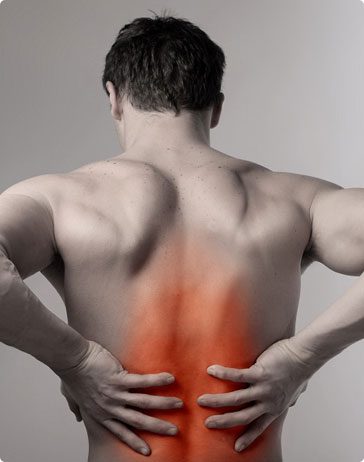
Back Pain
Due to its deep penetrating shock waves, focused shock waves can be an effective alternative to spinal injections for facet joint pain and other conditions
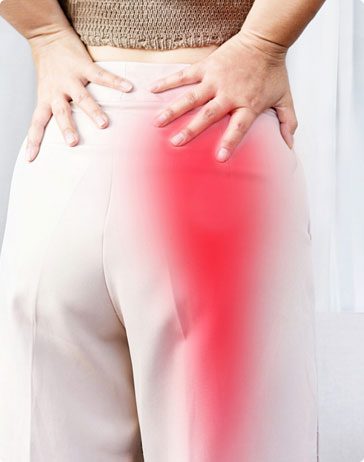
Heel & Foot Pain (Plantar Fasciitis)
We offer shock wave therapy as a stand-alone treatment or in combination with manual therapy, dry needling and LASER
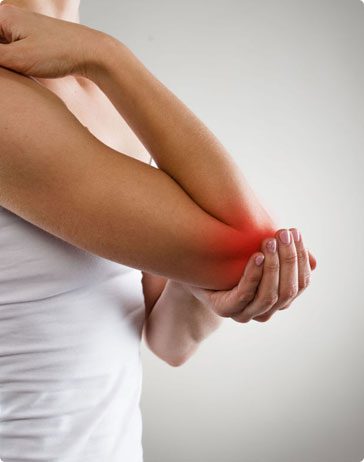
Shoulder Pain & Tendinitis
Shockwave therapy can be highly effective for certain types of shoulder pain including (calcific) tendinopathy and tendonitis
When you step foot into any of our clinics, I promise you three things:
The most important part of everything we do is you. No matter who you are, everyone is a priority in our clinics. We know you on a first-term basis and you will never be seen as just a number or a name on our list.
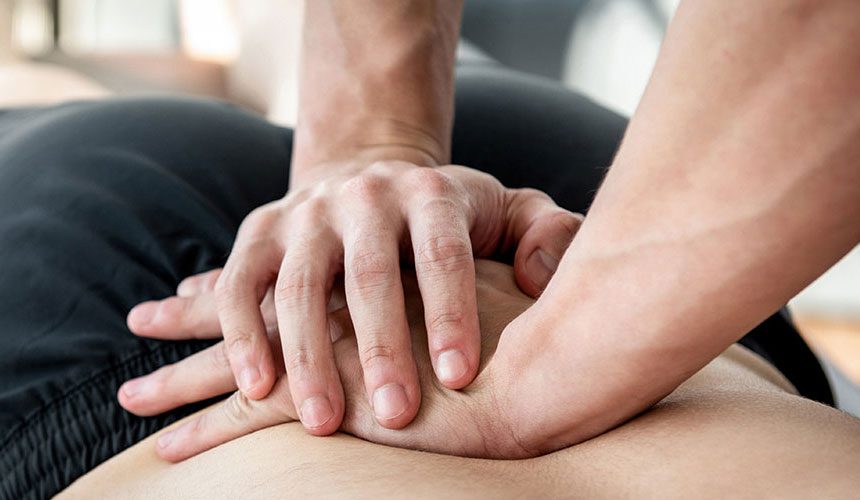
02. Transparency
03. We Never Stop Evolving
Our constant goal has always been and will continue to be to improve the experience for our patients, whether this involves expanding the services we offer or improving our skills and knowledge, we’re always adding benefits and services to serve our patients best.
Don’t take my word for it. These are our promises. Visit any of our clinics and see the team live up to them.

